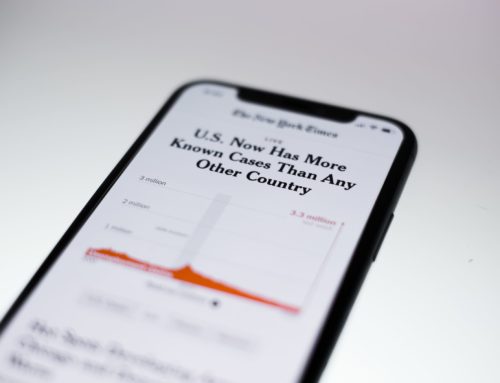Language Deprivation and Deaf Mental Health
Neil Glickman, Ph.D.
Wyatte Hall, Ph.D.
In many respects, the process of interpreting between native users of signed and spoken languages is comparable to the process of interpreting between native users of foreign languages. It is well-known, however, that language skills among Deaf people are much more diverse than among hearing people – varying from those who are essentially a-lingual (something virtually unknown among hearing people unless they are severely neurologically impaired or abused) to those fluent in multiple signed and spoken languages. The key difference for sign language interpreters is that the Deaf people they interpret for may not be native users of their first or second languages and may have experienced language deprivation.
Among mental health providers, a Deaf mental health clinical specialty is emerging. This specialty requires clinicians to have a great deal of training in the diverse ways Deaf people communicate. It requires a great deal of personal and cultural self-awareness, a broad understanding about all matters related to Deaf people, and clinical skills such as the ability to adapt standard mental health practices so that they are culturally affirmative and Deaf-friendly. Specialists must also be able to adapt all such practices for the subset of Deaf people who can be said to have experienced language deprivation so profound that its associated consequences create a disability all its own.
This disability of language deprivation, with all of its implications for the allied fields of mental health professionals who work with Deaf people (including sign language interpreters), is explored in a new book called “Language Deprivation and Deaf Mental Health” edited by the two authors of this VIEWS article. The book envisions language deprivation as the center of a wheel. The implications of language deprivation for the various domains of service providers are depicted as spokes of the wheel, as in the following diagram:
To illustrate briefly, in Chapter 1, psychiatrist Sanjay Gulati describes how early language deprivation may create a clinical syndrome (based on brain functioning research) which he calls language deprivation syndrome. This syndrome consists of language and cognitive deficits that interpreters may recognize along with developmental and psychosocial problems. In Chapters 2, 3, and 4, a variety of mental health clinicians discuss the implications of language deprivation for practices like psychotherapy and forensic psychology. In Chapters 5 and 6, two models for communication assessment of Deaf patients are presented, and the process of communication assessment is made relevant to the work of sign language interpreters. In Chapter 7, Romy Spitz and Judy Shepard-Kegl discuss what they learned about the best methods for adult language and communication training from their extensive work with language-deprived Nicaraguans. They also discuss what kind of language skill advances are possible after the critical window for language acquisition has closed. In Chapter 8, interpreter Joan Wattman discusses the application of the Integrated Model of Interpreting (IMI) created by Betty Colonomos to a case study of forensic interpreting in which a hearing and Deaf interpreting team work in a courtroom with a highly language-dysfluent Deaf defendant. Chapter 9 deals with the controversial subject of what cochlear implantation, often with an accompanying rejection of sign language, means for language development in Deaf children. Finally, the concluding chapter by NAD attorney Tawny Holmes presents best practices in advocacy for language development in Deaf children.
We think that interpreters will find the research and discussion in this book interesting and relevant, particularly the chapter by Joan Wattman, which was written in collaboration with a Deaf interpreter and DPI. Wattman takes as her starting point the premise offered by Danica Seleskovitch and frequently cited by Colonomos that “to interpret, one must understand.” When such understanding is not easily obtained, more is required of interpreters; indeed, they must develop a skill set for unpacking and eliciting meaning that goes well beyond what foreign language interpreters are routinely called upon to demonstrate. Wattman explains how the principles and practices of IMI guide the interpreting team in this work. She also makes clear that the interpreting participants and framework must adapt by allowing for consecutive interpreting which may take more time, and/or by allowing interpreters to initiate utterances such as clarifying questions. She also describes how interpreters may use drawing, manipulatives, and role playing, all of which make the interpreter quite visible and prominent in the communicative process – putting to rest any remaining notion that interpreters work unobtrusively, like a machine.
It is exciting to see how the field of sign language interpreting is devoting more attention to the challenges of interpreting with language-deprived and language-dysfluent individuals. This book complements emerging discussions about interpreting dysfluent or atypical language such as one finds in Pollard and Dean’s application of the demand-control schema when interpreting for dysfluent consumers (Crump & Glickman, 2011; Pollard, 1998). The challenge of interpreting for dysfluent consumers is already being addressed in the yearly Mental Health Interpreter Training program hosted by the Alabama Office of Deaf Services, and more recently through an online course developed by the Center for the Interpreting of Atypical Language at Northeastern University. In Deaf mental health, we absolutely must focus on how to effectively serve Deaf people with language deprivation, an increasing percentage of our clientele. We hope this new book will contribute to the development of new knowledge and skills for our interpreter colleagues.
The book is available at www.routledge.com. A twenty percent discount is available by using the code BSE19.
References
Crump, C., & Glickman, N. (2011). Sign language interpreting with language dysfluent deaf clients. Journal of Interpreting, 21-36.
Pollard, R. Q. (Ed.) (1998). Mental health interpreting: a mentored curriculum. Rochester, New York: University of Rochester School of Medicine.
Neil Glickman, Ph.D. received his Master’s Degree in Counseling from Gallaudet College in 1973 and his Ph.D. in Psychology from the University of Massachusetts in 1993. He is the former Unit Director of the Mental Health Unit for Deaf Persons at Westborough State Hospital in Massachusetts. This is his sixth boom in the clinical specialty of Deaf Mental Health. His website is NeilGlickman.com.
Wyatte Hall, Ph.D. is a research assistant professor at the University of Rochester Medical Center. He researches the connection between early childhood language experiences and adult health outcomes, especially as seen in the Deaf population. As a public health scientist, Wyatte is especially committed to combating language deprivation in the Deaf community by helping to promote a first language foundation through sign language for every Deaf child.









Leave A Comment
You must be logged in to post a comment.